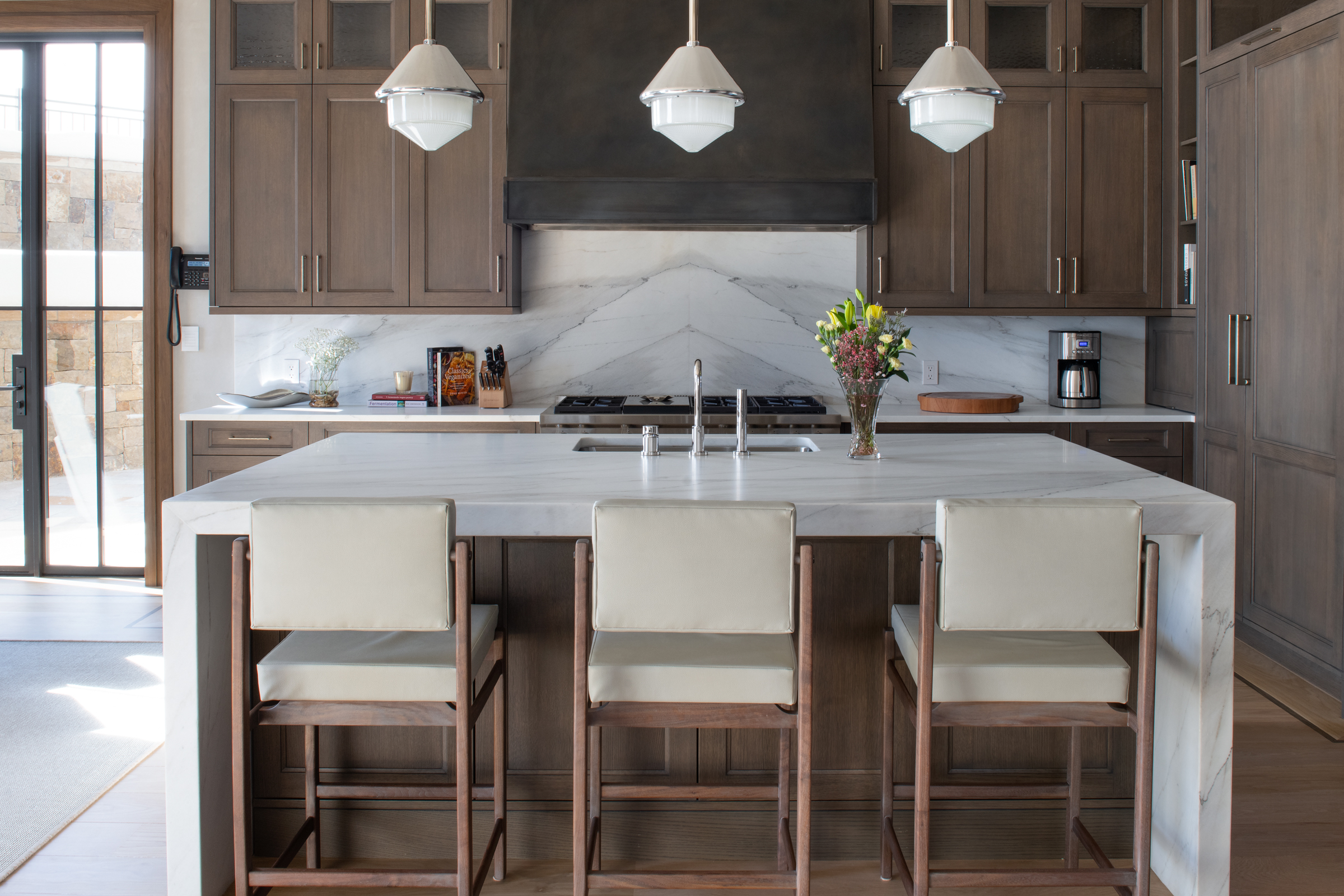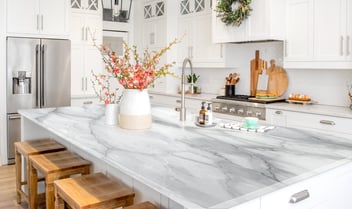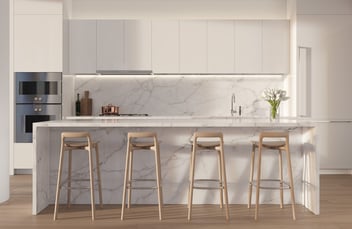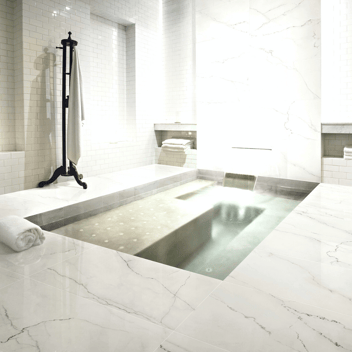
Pros and Cons of Marble Countertops
 There's a wide variety of materials available for natural stone and engineered countertops. Everything from quartz and marble to porcelain and cement-based materials. Marble, with its pristine look and unique veining, stands out from the competition. Its subtle coloration provides context to other design elements and architectural styles. It's durable and beautiful at the same time, and it comes in a variety of types to suit different tastes.
There's a wide variety of materials available for natural stone and engineered countertops. Everything from quartz and marble to porcelain and cement-based materials. Marble, with its pristine look and unique veining, stands out from the competition. Its subtle coloration provides context to other design elements and architectural styles. It's durable and beautiful at the same time, and it comes in a variety of types to suit different tastes.
Like any other material, marble has its benefits and its drawbacks. Here are the pros and cons of choosing marble as a countertop material.
Pros of Marble Countertops
Compared to other countertop materials, marble has some distinct advantages that make it stand out from the competition. Here are some of the pros of using marble as a countertop material:
Timeless Look. Marble complements a wide variety of architectural styles, and it has maintained broad appeal for centuries. Famous structures like the Taj Mahal in India, the Parthenon of ancient Greece, the Leaning Tower of Pisa in Italy, and The Washington Monument were all built with marble. The demand for marble shows no signs of slowing down. According to Google Trends, interest in marble countertops has been steadily rising since as early as 2004.
Natural Material: Unlike manufactured materials like quartz countertops which contain resin, marble is completely formed in nature over the course of millions of years. The distinct veining seen in marble is formed as minerals settle between layers of limestone as they fuse together under extreme heat and pressure to form marble. This process makes each marble slab completely unique - almost like its own fingerprint.
Long Lifespan: Marble countertops require more maintenance and care than some other countertop materials. But with proper care, they can last a lifetime. One need look no further than Michelangelo’s statue of David, chiseled from marble between 1501 and 1504, for proof of how long the stone material can last. More than 500 years later, the marble statue still stands today. Buyers can expect to get a lifetime of use out of a single purchase with proper maintenance.
Added Value: Marble is a high-end material that gives a luxurious and stately look to homes, museums, government buildings, monuments, and more. Because of its association with monuments and sculptures from antiquity, adding marble to a building can increase its property value.
Heat Resistant: Marble can withstand high temperatures and remain cool due to its high thermal mass. This makes marble a popular material choice for countertops, walls, floors, and other places where resisting sudden temperature changes is a necessity.
Cons of Marble Countertops
Not every countertop material is perfect, and marble is no exception. With all the benefits that come with using marble, the material does present a few challenges:
Cost: Marble countertops can come with a higher price tag compared to many other countertop materials. And due to its heavy weight, it's best installed by an expert. While the price of a marble slab can vary depending on its size, color, and quality, the material cost can range between $40 per square foot to as much as $100 on the high end. However, a well-maintained marble countertop is a lifetime investment.
Maintenance: The longevity of a marble countertop is entirely dependent on its maintenance. Regular cleaning and resealing once a year are necessary to get the most out of the material. Since maintenance can sometimes be overlooked by even the most meticulous of owners, the lifetime of a marble countertop can be shortened from 100 years to a few decades if neglected.
Staining: If not properly sealed, marble is vulnerable to staining over time. And due to marble’s porous structure, those stains can run deep into the stone and become permanent. To prevent this, buyers are advised to be careful with foods like beets, acids like vinegar or lemon juice, or liquids with colors such as red wine or fruit juice. This is why it’s important to look for marble that has undergone Soundstone treatment to avoid this problem altogether. SoundStone treated marble is significantly more resistant to staining and etching than untreated marble.
Porosity: Marble’s vulnerability to scratching, chipping, and staining is primarily caused by the stone’s natural porosity. The microscopic openings in the material can draw in liquids, become etched by acidic liquids, and become damaged by sharp objects or heavy pots & pans.
The Solution
The porosity of marble - as well as the resulting vulnerabilities to staining, chipping, and etching - can be remedied by treating the material with the SoundStone process. This greatly enhances the durability of the marble slab while filling in pores and sealing the stone. Marble that has been SoundStone treated has nearly 50% higher durability and a dynamic modulus of elasticity 2-3 times higher than untreated marble.
Read more about SoundStone treatment.
When it comes to natural stone countertops, marble stands out for its natural beauty and elegance. It fits with most kitchen decorating styles and gives a touch of history and luxury everywhere it's placed. Architects and designers look to marble for its longevity as well as its beauty and function.
While it does require regular maintenance and resealing, much of that can be mitigated with SoundStone treatment.
If you’re wondering how marble stacks up compared to quartz, porcelain, or cement-based products as a countertop material, click here to download our free ebook for a full comparison of marble vs. other materials.



